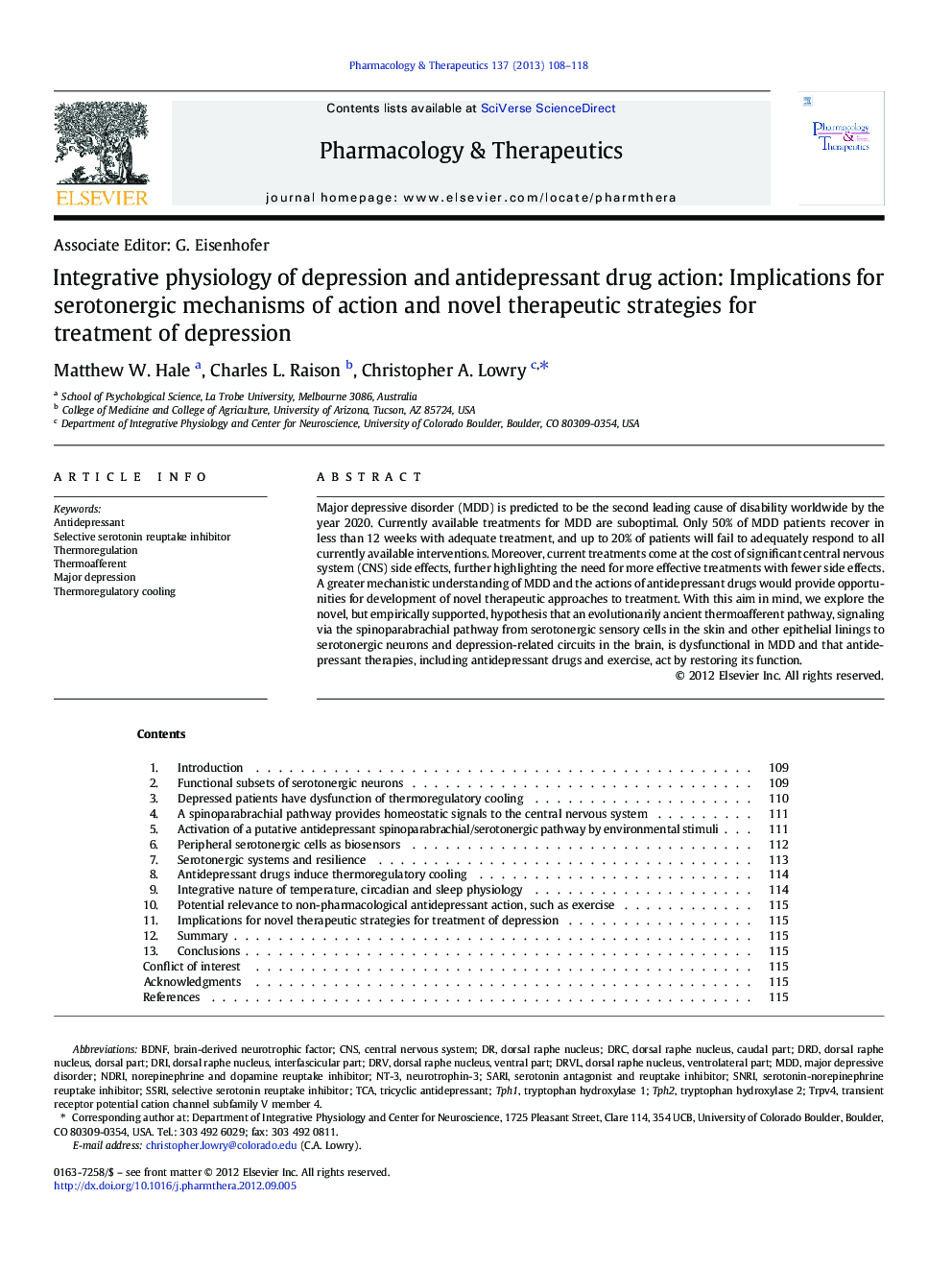| Article ID | Journal | Published Year | Pages | File Type |
|---|---|---|---|---|
| 2563301 | Pharmacology & Therapeutics | 2013 | 11 Pages |
Major depressive disorder (MDD) is predicted to be the second leading cause of disability worldwide by the year 2020. Currently available treatments for MDD are suboptimal. Only 50% of MDD patients recover in less than 12 weeks with adequate treatment, and up to 20% of patients will fail to adequately respond to all currently available interventions. Moreover, current treatments come at the cost of significant central nervous system (CNS) side effects, further highlighting the need for more effective treatments with fewer side effects. A greater mechanistic understanding of MDD and the actions of antidepressant drugs would provide opportunities for development of novel therapeutic approaches to treatment. With this aim in mind, we explore the novel, but empirically supported, hypothesis that an evolutionarily ancient thermoafferent pathway, signaling via the spinoparabrachial pathway from serotonergic sensory cells in the skin and other epithelial linings to serotonergic neurons and depression-related circuits in the brain, is dysfunctional in MDD and that antidepressant therapies, including antidepressant drugs and exercise, act by restoring its function.
